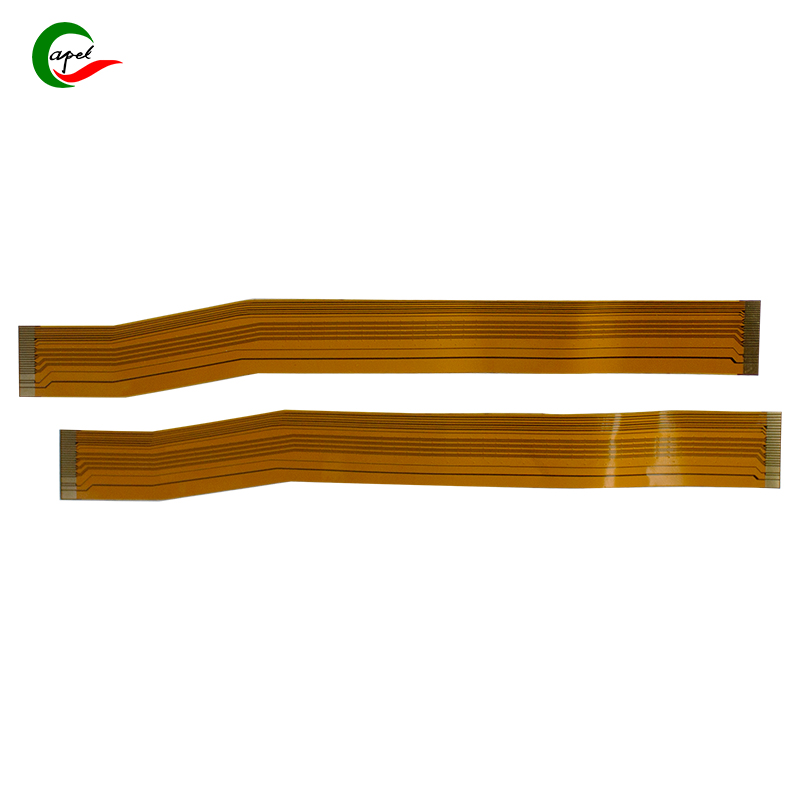If you’ve worked with FPCs (flexible printed circuits), you know the drill: you unroll a big sheet of polyimide (PI) substrate, cut out your custom shapes, and end up with a pile of odd scraps—trimmed edges, leftover corners, or half-used sheets. At first glance, that scrap looks like trash. But it’s actually wasted money: PI isn’t cheap, and tossing those pieces adds up fast.
The good news is, you don’t need fancy equipment to use more of your substrate and less of it becomes scrap. It’s all about small, practical tweaks to how you plan, cut, and reuse materials. Below’s how to do it—no jargon, just stuff that works for everyday FPC projects.
Most FPC scrap isn’t “unavoidable”—it’s from lazy habits:
-
Bad nesting: Cutting one FPC per sheet, leaving huge gaps between pieces (like putting one cookie cutter in the middle of a dough sheet).
-
Over-trimming: Cutting 2mm off the edges “just to be safe,” even though the design only needs 0.5mm.
-
Buying too big: Grabbing a standard 300mm×400mm sheet for tiny FPCs (like sensor wires) that only need 100mm×100mm.
Every scrap piece is money left on the table. Fixing these habits saves cash and cuts down on waste you have to haul away.
Nesting—arranging FPC shapes tight on the PI sheet—is the single best way to cut scrap. You don’t need to be a designer; just follow these tricks:
-
Flip and turn shapes: If your FPC is a long strip (say, for a phone hinge), rotate half of them 180°. Suddenly, the “empty” space between one strip’s end fits the next strip’s start. I’ve seen this cut scrap by 30% in one go.
-
Mix small and large parts: Tuck tiny FPCs (like 5mm-wide sensor leads) into the gaps around bigger ones (like battery connectors). Those little pieces would’ve been scrap otherwise, but now they’re usable.
-
Use free tools: You don’t need expensive software. Even basic design programs (like Inkscape or free PCB tools) have a “nest” button that auto-arranges shapes for you. It takes 60 seconds—no brainpower required.
I used to over-trim FPCs too—afraid a slightly off cut would ruin the whole piece. But I learned: tight, precise trims waste way less material, and they’re easier than you think:
-
Stick to the design spec: Check your FPC’s drawing—most only need a 0.5mm “buffer” around the edges. Cutting more than that is just throwing PI away.
-
Ditch the “safe zone” myth: Some people leave 5mm of empty space around FPCs for “cutting errors.” Instead, use a sharp carbide blade (they stay sharp 3x longer than cheap blades) and shrink that zone to 1mm. It’s still safe, but saves tons of material.
-
Stack thin sheets: If you’re using 0.025mm PI (super thin), stack 2–3 sheets and cut them at once. You get identical shapes every time, and you don’t waste material on test cuts for each single sheet.

Even with great nesting, you’ll get small scrap pieces. Here’s how I reuse them instead of tossing:
-
Prototypes: Need to test a tiny new sensor wire? Grab a scrap piece—no need to open a fresh PI sheet for a 2cm test.
-
Quick repairs: If an FPC’s coverlay (the protective film) tears, cut a matching scrap of PI, glue it with epoxy, and it’s fixed. Way cheaper than replacing the whole FPC.
-
Jumpers: If the scrap has intact copper traces, snip it into 10mm strips. These make perfect jumpers (to connect two circuit points) — better than buying pre-made ones, and free.
The biggest waste I see? People buying standard 300mm×400mm PI sheets for small jobs. Instead:
-
Ask for custom cuts: Most suppliers will cut PI to your exact size (e.g., 150mm×200mm) for a few extra dollars. If your project only needs that size, you’ll have zero “unused” scrap.
-
Grab supplier remnants: Suppliers have leftover PI pieces (called “remnants”) from big orders—they sell them cheap (sometimes half-price!). They’re perfect for prototypes or small batches, and you’re using material that would’ve been scrap anyway.
Saving PI scrap does more than keep cash in your pocket:
-
Faster work: Less scrap means fewer trips to buy new material, and less time sorting/trashing waste. I used to spend 10 minutes a day cleaning up scrap—now it’s 2.
-
Greener projects: Using less PI means less energy spent making new material, and less waste going to landfills. Small tweaks add up for the environment.
-
More consistent parts: Tight nesting and precise trims mean your FPCs fit better in devices—fewer “oops, this one’s too small” moments.
FPC scrap isn’t “trash”—it’s just PI waiting to be put to use. You don’t need fancy systems or big budgets to boost substrate efficiency; you just need to be intentional with how you plan cuts, trim edges, and reuse small pieces.
Every time you nest a shape tighter, trim a millimeter less, or grab a scrap for a prototype, you’re not just saving material—you’re making your work more efficient, affordable, and sustainable. For anyone working with FPCs, those small, smart moves aren’t just “good practice”—they’re the difference between wasting resources and making the most of what you’ve got.
related link:
